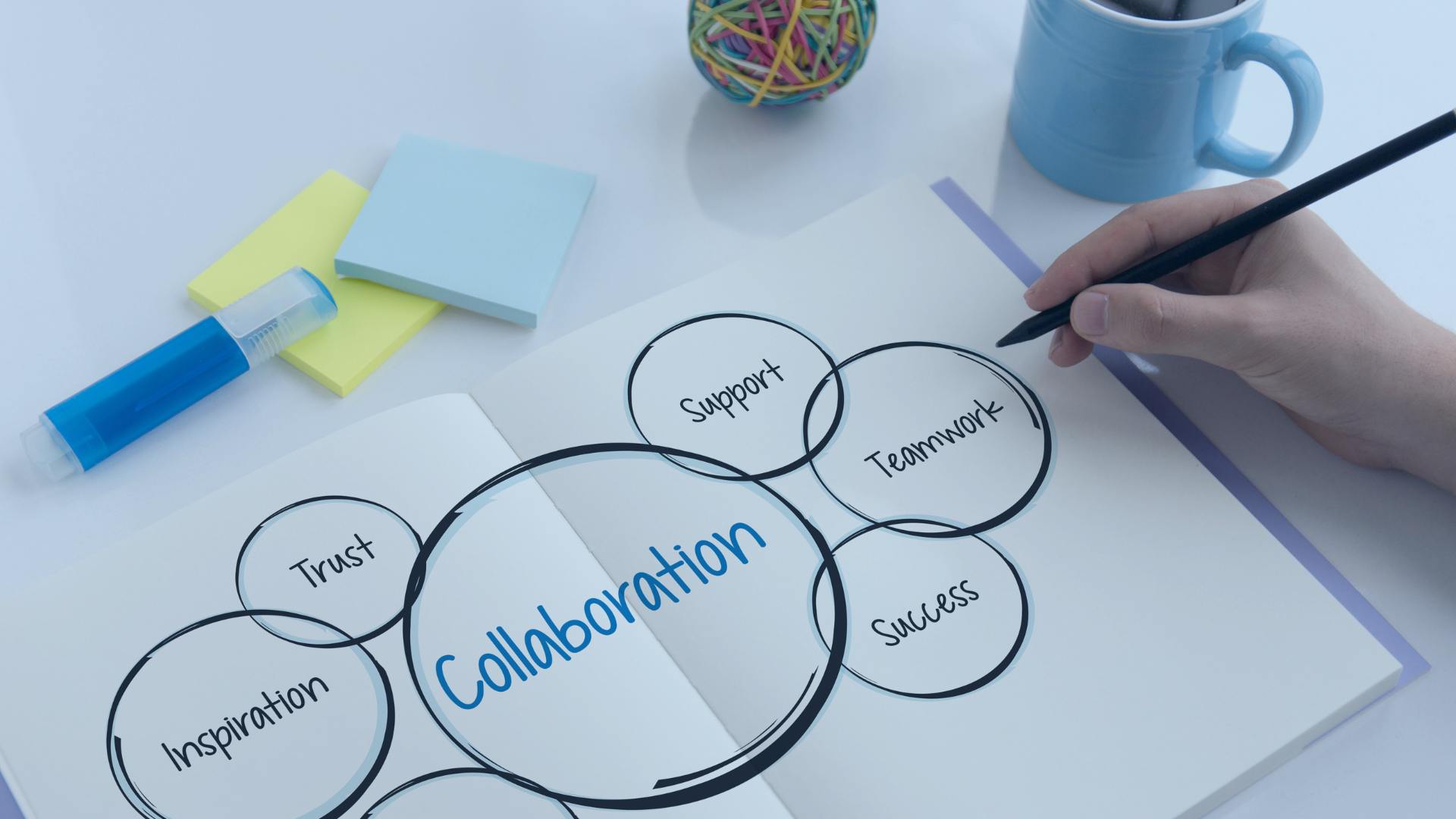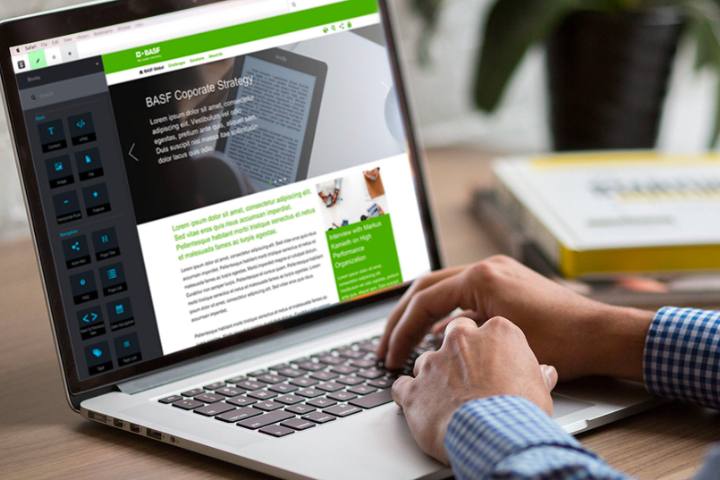Team collaboration is crucial to the success of your business. It helps to build trust between employees, making it easy for them to communicate, and share ideas, experiences, and resources. Successful team collaboration leads to improvements in employee engagement, performance, and productivity.Team collaboration is crucial to the success of your business. It helps to build trust between employees, making it easy for them to communicate, and share ideas, experiences, and resources. Successful team collaboration leads to improvements in employee engagement, performance, and productivity.

6 Strategies To Help You Build A Collaborative Team In Your Organization
Despite the emphasis organizations place on collaboration, it is not easy to accomplish. Building a collaborative team requires a certain degree of effort and the right tools. When team collaboration is ineffective, employees may silo off and prefer to work alone.
Below, we will discuss strategies to help build a collaborative team in your organization.
Establish Common Goals and Objectives
Building a collaborative team will be challenging when employees need help understanding the reason for cooperation. A study by the Institute for Corporate Productivity (i4cp) discovered that for collaboration to be productive, it must have a purpose.
So, a shared understanding of the organization's objectives will motivate employees to work towards them. Also, employees will become more accountable when they understand the purpose of what you are trying to accomplish. Now, how do you establish common goals and objectives?
- Be transparent about the goals and objectives and communicate them frequently. This could also be embedded in your hiring plan.
- Keep an open mind to the opinions and experiences of team members.
- Find ways to improve internal communications.
- Consider and highlight the role your employees play in achieving the broad goal.
- Hold regular meetings to ensure team members are working towards achieving specific objectives.
Getting your members to collaborate towards a defined objective may very well increase your overall productivity.
Offer Reward Programs to Enhance Collaboration
Another way to build a collaborative team is to have a reward program.
A reward program that recognizes team performance will show employees how much you value collaboration. Once they see the value of collaboration, it will encourage them to commit and put in their best efforts.
However, if you only offer rewards for individual performance, your employees may not see the need for collaboration. They may become unmotivated and prefer to work alone. So your reward program should recognize both individual and team efforts. Your employee reward programs should include ideas like:
- Open recognition
- Gift vouchers
- Sponsored vacations
- Team outings
- Bonuses
Besides reward programs, you also want to ensure that your employees get added perks like health insurance, which can be tricky for some LLCs. However, VentureSmarter offers some great tips on how to get this set up for your team. Once you include team-based rewards, team members are more likely to look for ways to work together to meet their objectives.
Lead By Example
Leading by example is vital when building a collaborative team. Top management and executives must always be willing to collaborate. Your employees will have a better value for collaboration if you demonstrate how it works.
One way you can lead by example is to listen. Listening to your team members helps understand them better. Hence, you can foster more effective collaborations.
Involving yourself in your team’s initiatives is also a good way you can lead by example. Engaging with your employees is an effective way to show that you consider them valuable to your organization. As a result, you can encourage a more positive attitude towards collaboration.
Another way to lead by example is by following the rules. Going by the rules is one way you can show your team that you value your corporate culture, norms, and workplace standards. Also, they’ll get to see that the rules are not one-sided. Hence, they are more likely to develop a strong sense of responsibility and accountability.
Highlight Individual Strengths
Everyone on your team will have their respective strengths and weaknesses. Selecting individuals with a wide range of skills is essential to building a successful collaborative team.
People tend to feel undervalued when their unique skills are not recognized, and according to a survey, 66% of employees will leave their jobs if they don’t feel appreciated. So, as a team leader, you should identify the strengths of your members and build on them.
For example, one team member can excel at interpreting statistical analysis results, another may be great at making sales pitches, and a third team member might be good at closing deals.
You can identify your employees' strengths by adopting regular appraisals, peer-to-peer reviews, and conducting workplace surveys where employees can indicate what they’re good at.
When you have identified the strengths of individual team members, you will be more informed as to what tasks to assign them and how best your team can work together.
Foster Creativity
Creativity is also essential to successful collaborations. As you build your team, make sure you create an environment that supports the exchange of ideas. This can be achieved by holding guided brainstorming sessions.
Here, employee suggestions are discussed at length and they make a joint effort towards selecting the best ideas. You can also have team-building events and activities to improve communication and encourage team members to be open with each other. This way, you can achieve more effective teamwork on projects.
Ensure you create a space that encourages creativity and a culture that encourages employees to be innovative. For instance, if an employee brings up the idea of investing in software, respond by saying, "Tell me more about it," instead of shrugging it off. This will show you are open to new ideas.
Additionally, providing individual spaces to think and communal rooms for groups to ruminate on ideas together can improve collaboration, problem-solving, and team productivity.
Pick the Right Collaboration Tools
Picking the right collaboration tools is crucial for effective collaboration. You need to consider details like your team size, business processes, and goals before you choose which collaborative tools you'll work with.
Also, you must think about the age profile of your organization. For instance, a survey by Queens University found that millennials are more likely to work with collaborative tools than Gen-X and baby boomers.
Another thing to consider is how long it will take for your employees to adapt to the tools. You can also test different tools and identify the best one for your team. Below, we will discuss a few team collaboration tools you should consider:
Concrete CMS
Do you wonder if people are actually reading your company news?
Do employees actually know what's going on beyond their immediate team?
Build your Internal Communications Intranet with Concrete CMS and you can ensure you are reaching your entire hybrid workforce. Empower every employee, and track who has seen which assets. Create the clarity your employees need, and give them a voice to contribute.

Google Drive
Using secure web elements is very important. Not paying attention to this can leave your online projects vulnerable to attacks. This is where tools like Google Drive come in handy. Google Drive is a secure cloud-based storage option that allows you to access files from anywhere on your computer or smart device. It is the ideal tool for creating, editing, and collaborating on resources. With its unlimited storage, there is no limit to how many files you can create.
Members of the teams can use Google Drive to share resources for a project by creating a link or sending an email. You also have control over who can make changes to your documents.
Asana
There is a lot of Asana vs Jira discourse in circulation. However, for this piece, we'll show you the positive elements of Asana because it is preferred by non-software teams. Asana helps teams effectively manage the progress of projects. This tool can assist you in keeping your projects on track and organized. You can also use it to schedule tasks and manage the project timeline.
Asana also has a workload monitoring feature that lets you keep tabs on your team’s workload. With real-time charts, you will know if any team member is at risk of burnout or if the project is off track.
Hightail
Hightail is a collaborative tool that allows you to share files securely. It offers team members outside your organization access to in-house resources. These employees can also upload and distribute files.
Hightail has several unique features. One feature lets you know when someone gains access to your document via email tracking and file delivery. There is also a secure download link that can restrict access to your content.

Author: Jon Morgan
Jon is the founder of two successful e-commerce and SaaS businesses. He's passionate about sharing what he has learned from working with business owners through Venture Smarter.


